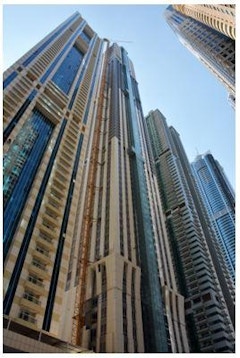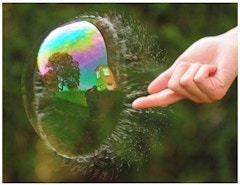32 results
-
As we change the rules of thermal performance for facades, we are changing the conditions the glass is subject to in shadow boxes and glazed spandrel…
-
Balustrade Design Loads
- Paper by Richard Green, SE, PE, P.Eng, CPEng, IntPE, APEC Engineer, M.ASCE M.IEAust, Founding Principal Andrew Crosby PEng, Principal Terrence McDonnell, Associate Principal
A review of balustrade practices from around the world, and why practices in United States and countries using ICC code/ASCE 7 designs are failing to… -
A Structural Glass Design Manual
- Paper by Richard Green PE SE P.Eng CPEng IntPE(Aust) APEC Engineer · Terrence McDonnell S.E., P.E., P.Eng., SECB · Andrew Crosby BASc, P.Eng., LEED® AP BD+C
Other than limited special cases, there is a lack of standards providing guidance on the design of structural glass. This has resulted in an ad-hoc
-
Glass Balustrade Design
- Paper by Richard Green, PE, SE, P.Eng, CPEng IntPE(Aust), APEC Engineer, Principal/Owner Andrew Crosby, PEng, Principal Terrence McDonnell S.E., P.E., P.Eng., SECB, Associate Principal
Glass handrail design in the United States lags behind best practice in other parts of the world. There can be as much as a factor of four (4)… -
The Scope of the Structural Glass Design Manual
- Paper by Richard Green SE PE P.Eng CPEng, Principal / Owner Andrew Crosby P.Eng LEED® AP BD+C, Principal Terrence McDonnell SE SECB PE P.Eng, Principal
The technology of glass now allows glass to be fabricated in sizes and structural configurations not previously conceivable. The standards and codes… -
EVA Interlayers in Hardened Facades
- Paper by Nicholas Oberts, PE, Associate Principal Mark K. Weaver, PE, SE, Principal Phillip Benshoof, PE, Physical Security Engineer
Explosions can result in very high loads of extremely short durations. Protective design to mitigate the effects of blast loading requires façade… -

Control Tower Glass Design
- Paper by Daniel McCormick, P.E., PMP, M.ASCE, Federal Aviation Administration Stephen M. Morse, Ph.D., P.E., M.ASCE, Assistant Professor Scott H. Norville, Ph.D., P.E., F.FTI, F.ASTM, F.ASCE, Professor
ASTM published the first version of ASTM E2461-05: Standard Practice for Determining the Thickness of Glass in Airport Traffic Control Tower Cabs in… -

Thermal bridging: The missing key to low energy building design
- Article by Ivan Lee
Thermal bridging through building facades have been overlooked or over-simplified by designers and building energy codes and standards in the past, which has led to higher space heating and cooling loads, occupant discomfort, and higher risk of condensation.
-
Laminated Security Glazing
- Paper by Vaughn Schauss,
Glass is an essential component for any type of building. Its transparency enhances daylighting and provides occupants a view to the outside. Whether… -

More Than a Facade
- Paper by Edward Losch, PhD, PE, SE, RA Marc Maguire, PhD, Assistant Professor
In 2014, the American National Standards Institute (ANSI) approved the Precast/Prestressed Concrete Institute (PCI) as an accredited ANSI Standards… -

Skin Deep: Health, Wellness, and the Facade System
- Article by Christopher Payne, AIA, LEED AP, SKINS Content Editor
Here we are, a full year after the initial COVID-19 surge rocked the United States. It’s hard to believe we’ve been living through the pandemic for a full year at this point; and yet it also feels like it’s been multiple years. We are beginning to see glimmers of hope on the horizon as more people..
-

Episode 03: DOE Does Windows
- Podcast by Stephen Selkowitz · Marc LaFrance
FTI's Mic Patterson sits down with special guests Steve Selkowitz of Lawrence Berkeley National Lab and Marc Lafrance of the Department of Energy .
-

Episode 01: Passive House
- Podcast by Lois Arena, PE
The Facade Tectonics Institute is pleased to launch our long-awaited podcast, starting with Episode 01: Passive House, a moderated discussion between Lois Arena, Director of Passive House Services at Steven Winter Associates and Spencer Culhane, Senior Building Envelope Specialist at Schüco USA.
-
When Facades Kill
- Paper by Terri Meyer Boake
The tragic fire of June 14, 2017 at the Grenfell Tower in London, England has brought to a very public global forum issues related to the impact of
-
Subjective Perception and Objective Measurement
- Paper by Caroline Lama · Antonio Luz · Ashley Reed
Current glass industry standards provide clear tolerances for readily quantifiable physical properties to assist with the evaluation of visual
-

Specifying Commercial Aluminum Finishes
- Paper by Ben Mitchell, MBA,
Many factors will influence coating selection, but to achieve the desired performance level for a given situation, coatings must be specified based… -

Silicone Spandrel Glass Opacifiers
- Paper by Scott Norville · Samir Blanchet · George Torok · Kris Vockler · John Swanson · Chris Barry · Lawrence Carbary · Stephane Hoffman · Timothy Krytenberg · Chris Fronsoe
Curtain wall design commonly uses insulating glass units for vision and spandrel glazing to provide better visual harmonization of building facade
-

Lightning Protection as Building Envelope
- Paper by Jennifer Morgan · Michael Chusid, RA FCSI CCS
A building’s envelope mitigates the effects of meteorological phenomena – including lightning – upon the structure and its occupants and contents.
-
Fire Safety in High Rise Exterior Facades
- Paper by Angela M. Ogino
One of the most complex yet least understood areas where fire can spread is at the perimeter of a building. Fire can not only spread from
-

EUI of Building Clusters
- Paper by Srinivas M. Rao, AIA, AICP, LEED AP,
Large master planned developments such as Battery Park City in Manhattan, Mission Bay in San Francisco, and Playa Vista in Los Angeles were built…


